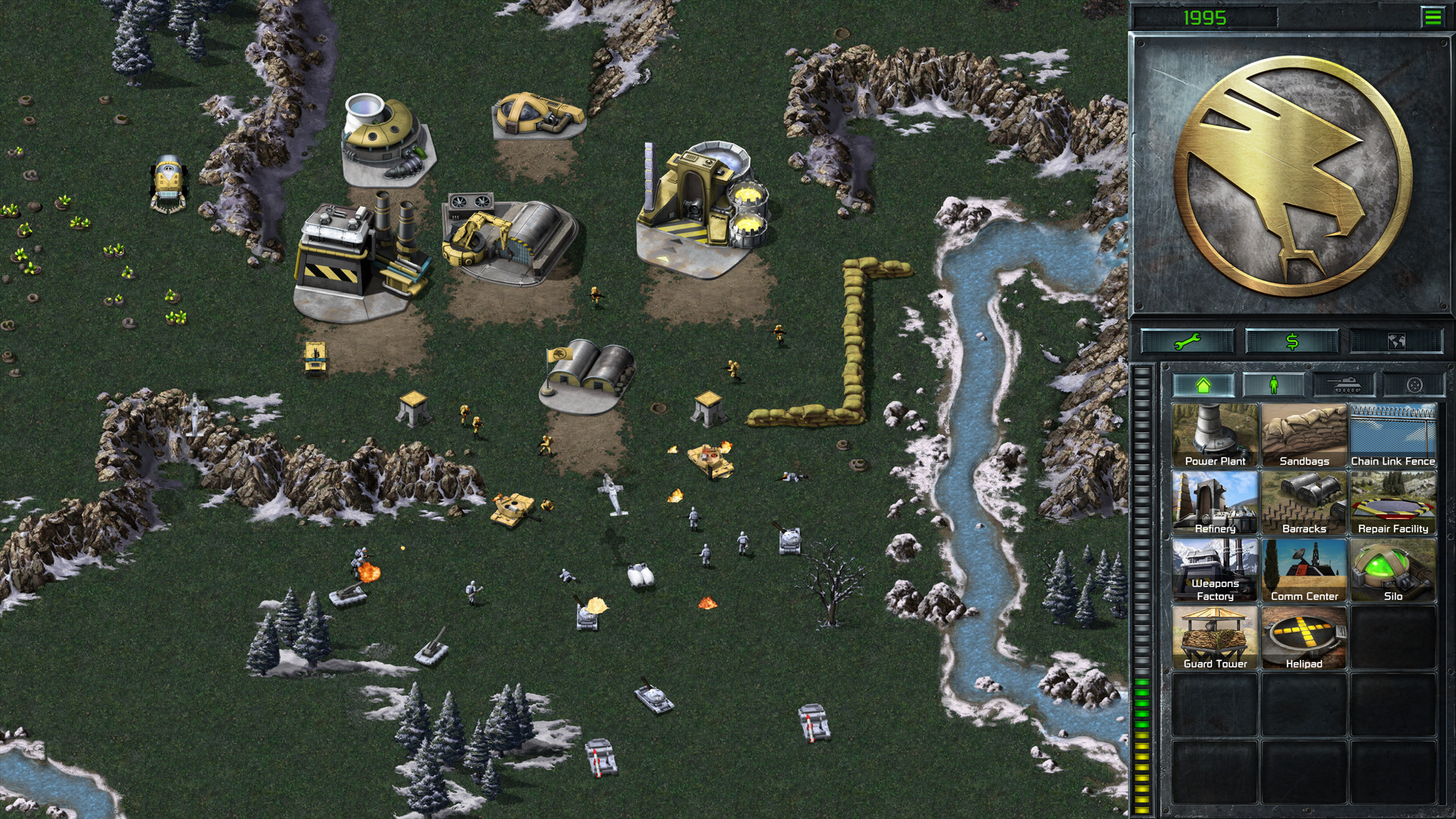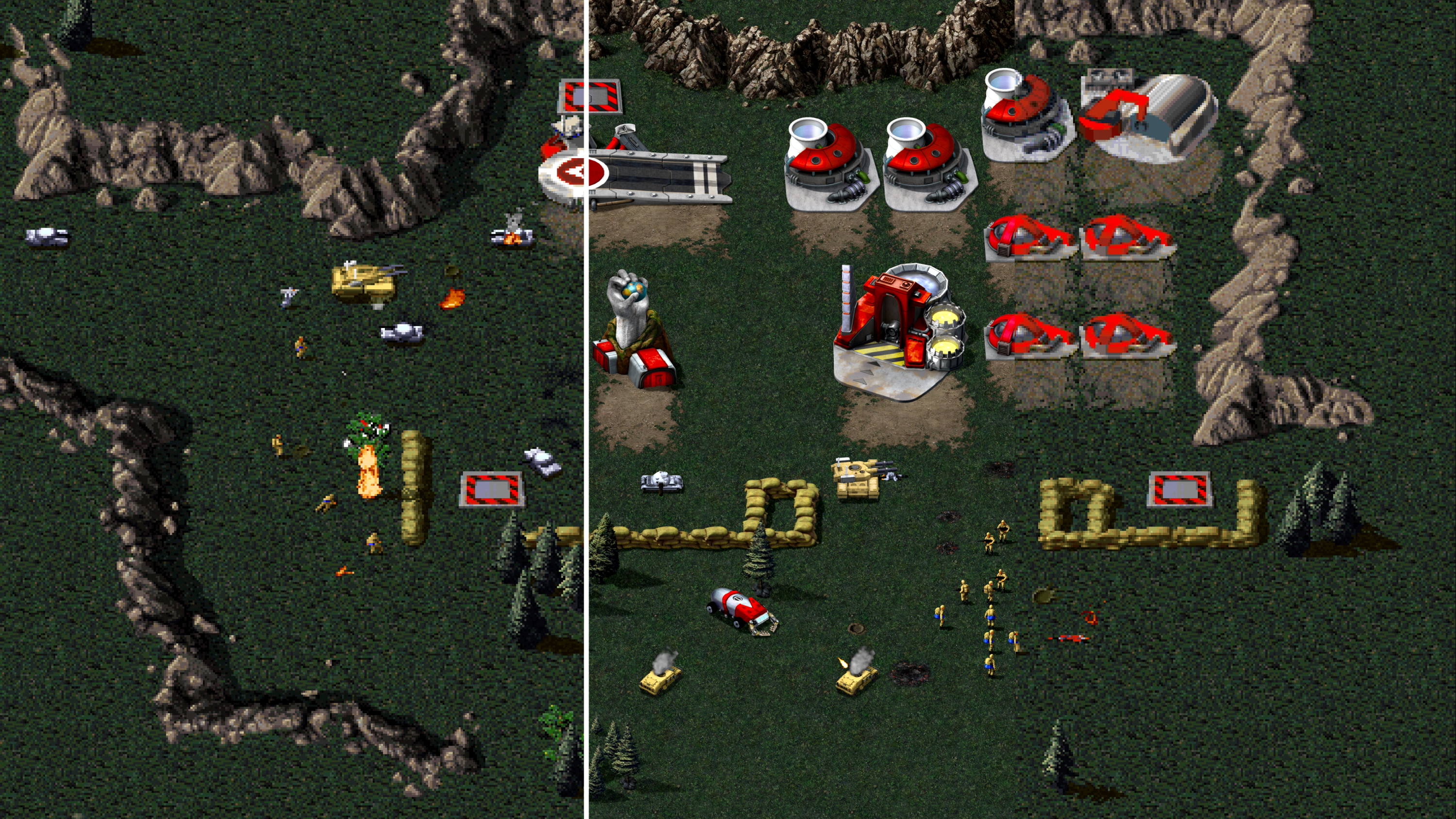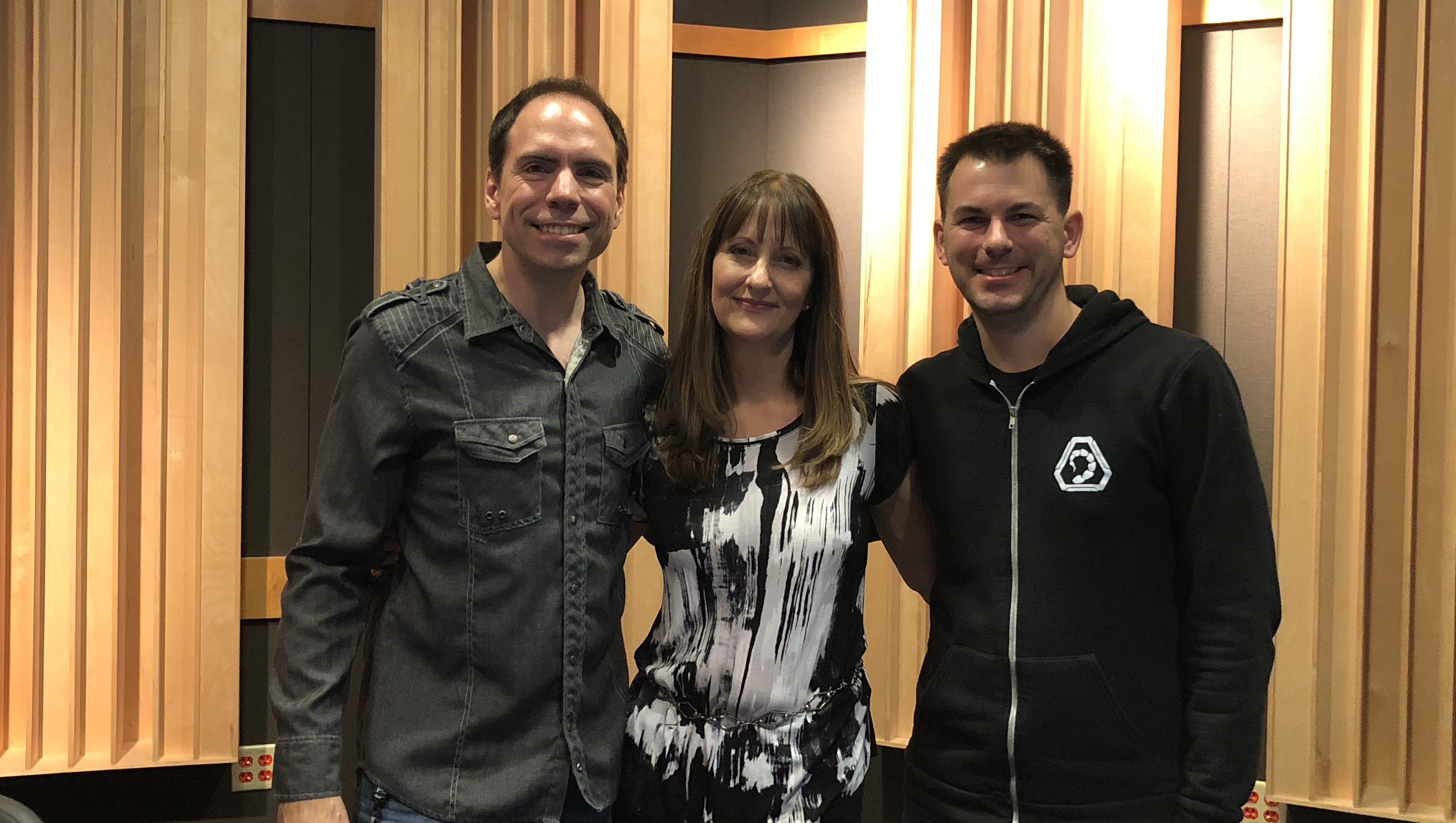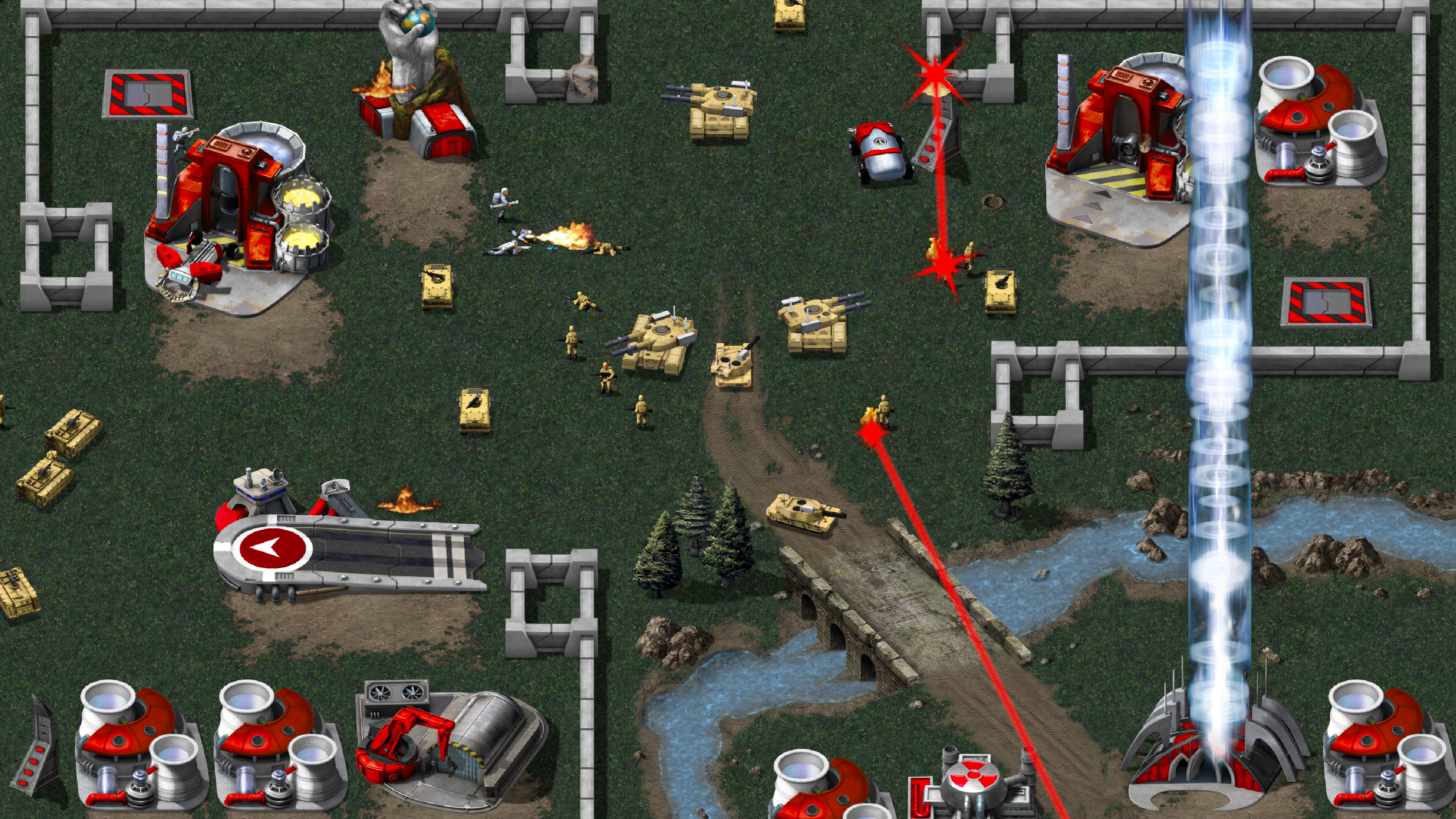Fan service done right: how EA worked with fans to create Command & Conquer Remastered Collection
Welcome back, commander

There’s something uniquely challenging about remastering classic PC games, as many games publishers know. Beloved titles can acquire a passionate fan following over the years, and it means those iconic games don’t just belong to the people who created them – in many ways, they belong to the fans as well.
So, when remastering iconic games by bringing updated graphics and tweaking gameplay mechanics to better suit modern hardware and gaming sensibilities, the teams behind the remasters have to walk a tricky line where they have to update the games while remaining true to the original artistic vision, while also appeasing its dedicated (and vocal) fans. After all, you don’t want to forget about your old audience while chasing a new one.
It’s a balance not every company manages. So, when EA, and Petroglyph, the studio tasked with the remaster, decided to take on Command & Conquer: Tiberian Dawn and its sequel Red Alert – two of the most popular and influential PC games ever – the stakes couldn’t have been higher.
So, as part of TechRadar’s PC Gaming Week, we chatted to Lead Producer Jim Vessella about how him and his team approached remastering such vaunted titles – and how they worked with the community to ensure that the Command & Conquer Remastered Collection does these games – and its fans – justice.

As far as remasters go, Command & Conquer Remastered Collection is incredibly ambitious. Not only has the first game, 1995’s Command & Conquer: Tiberian Dawn, been remastered with new graphics and audio, but so too has its 1996 follow-up, Red Alert, as well as all the expansion packs originally released for the two games.
That’s a huge amount of content. But, as Vessella explains, this remaster was a labor of love for him and his team, which is made up of fans of the games.
“In terms of the development team,” Vessella tells us, “it's been really a dream come true for me because I've been I've been a fan since I first discovered the game. I think I was around 12 years old, you know, in 1995. And it was a real imprint on kind of my gaming spirit when I first discovered it.”
Sign up for breaking news, reviews, opinion, top tech deals, and more.
For many PC gamers in the mid-90’s, the Command & Conquer series practically defined the RTS (Real Time Strategy) genre, and many people have happy memories of whiling away hours on the addictive games.
However, the team isn’t just made up of fans – it also features many of the people who were involved with the original games.
“We're working with Petroglyph, a studio that was formed by a lot of the former veterans of Westwood Studios, including several of the key members who worked on the original Command and Conquer. So, that includes people like Mike Legg. who's their president, and he was at Westwood since like 1986.”
This mix of fans and veterans is a reassuring mix for anyone who wants the remaster to be as true to the spirit of the original games as possible.
“Mike Legg,” Vessella continues, “worked on all the Westwood titles throughout that time and literally today he's fixing audio bugs on the game. So, it's just this crazy kind of big circle for him. There’re also guys like Ted Morris. Ted was the community manager back at Westwood in the days, and worked with a lot of the fans back then on tournaments and in PR stuff, and he's now our senior producer on the game.”
The team also features Joe Bostic, co-founder of Petroglyph, and who some regard as the father of Command and Conquer. “Joe was the co-creator of Command and Conquer, like literally helped cocreate the genre with Dune II and Command and Conquer with Brett Sperry. He's our creative director, so he's been involved in all the decisions around how to bring this game back.”
So, straight off the bat, it’s clear that the Command & Conquer Remastered Collection is taking its legacy clearly, with many of the original team members working to bring their masterpiece to a new generation of gamers.

Music to our ears
However, while the likes of Legg, Morris and Bostic are all important players in the history of Command and Conquer, there was someone else’s’ involvement in the project that really got C&C fans excited.
“Then, of course, there’s Frank Klepacki,” Vessella tells us, “the iconic composer of the legendary soundtrack that we have. He’s back and he's remastered over seven hour's worth of music for the collection.”
As anyone who has played the original C&C, and Red Alert, knows, the soundtrack to those games is such an intrinsic part of their appeal. The fact that the original composer has returned to recreate the soundtrack with the Tiberian Suns, a band he’s performed with at fan events, is incredibly exciting.
"It's just been an incredibly passionate collaboration"
Jim Vessella
Klepacki and the Tiberian Suns aren’t just rerecording the original soundtrack, either. As Vessella reveals, there’s “an extra 90 minutes of music that's now just like super rocked out and awesome. He’s also overseen or redone all the sound effects in the game, and done a pass on the cinematics. So, it's been just amazing having Frank involved.”
Bringing back so much of the original team means the remastered games are as much a treat for the veterans as it is for the fans. “So it’s just really that these team members get to revisit this game that they created, you know, 25 years ago, and now we're getting back into it,” says Vessella.
Of course, to Vessella, this is also a very personal project. “I've been a Command and Conquer fan my whole life. I had the chance to work on C&C 12 or 13 years ago… on Command and Conquer 3… and I led up Kane's Wrath, the expansion pack for that. I also worked on Red Alert 3, so this will actually be my fifth C&C title that I'll be shipping. So it's also a real coming home for me in terms of being able to work on the franchise again. So yeah, it's just been an incredibly passionate collaboration.”

Visuals
Key to any modern remaster is updating the visuals while keeping the general look and feel of the games the same. Again, EA and Petroglyph were careful to choose people who would understand how important this is.
“We’re working with Lemon Sky Studios, and art studio in Malaysia. And they've been fantastic at recreating all the content in 4K. They also did all the art for the Starcraft remaster a few years ago… so they have a really unique approach in terms of understanding how to bring that nostalgia back,” explains Vessella.
Getting the community onboard
While getting C&C veterans on board was a good move to ensure the Command & Conquer Remastered Collection stayed true to its roots, EA and Petroglyph also made the commendable – and sometimes all-too-rare, move to also get the fans opinions and help as well as the project progressed.
“One of the most important things for the project,” Vessella told us, “has been this idea of community participation and engagement. So, we announced the game back in November 2018, literally before we even started working on it. We started on December 1, and we announced in November to really start getting that community feedback.”
Some may think this was a risky move. EA hasn’t got the best reputation amongst certain gamers, and that initial announcement could have caused anger or concern from fans worried about a half-assed remaster.
“We told them what we were doing. We asked them, how they wanted us to approach it.” That initial gambit paid off, as the community were keen to give the team ideas for the remaster.
“There were certain things that became super clear in terms of like, ‘Oh, you should absolutely redo the user interface, and bring in the spirit of C&C 3 and Red Alert 2 and bring over the tabs and add hotkeys’ and all these things and, you know, the community became super engaged.”
This allowed the team to “focus our pre-production on the things that the community most cared about.”

The community council
So, how did the team involve the community? “We formed this thing called a community council,” Vessella explains, “where we recruited 14 of the most dedicated C&C players and fans from around the world.”
This council was made up of some of the most active Command and Conquer fans and players who, in Vessella’s words, “kept the franchise going for the last 10 to 15 years.”
Not only did this include competitive players and C&C streamers with huge followers, but also people who created mods for the original games, such as OpenRA, an open-source recreation of the original Red Alert, and CnCNet,a platform that allows players to play the original games (alongside Dune 2000, Command & Conquer Tiberian Sun and Red Alert 2) online – something that they were unable to do when they first launched.
Creating open-source recreations and offering unofficial multiplayer platforms for games can often be a sure-fire way to raise the ire of game publishers, so it’s heartening to see EA and Petroglyph embrace the creators of these mods and understand that they were made through a love of the game.
"We recruited 14 of the most dedicated C&C players and fans from around the world."
“We’ve brought them all together,” continues Vessella, “into a Discord channel and put them under a super NDA” – basically swearing them to secrecy while they share the progress of the project. “That's allowed us to essentially have 24/7 direct access with them for the entirety of the project. So, we’re sharing with them on a daily basis everything that's happening in the game. They're seeing concept art the day that it comes in from the art studio, and giving us feedback on it. We’ll also play the game for them and show them footage before anyone else in the world has even seen it.”
They were also given an early version of the games to play for themselves. This kind of access for fans is almost unheard of from major studios, and it’s something that’s mutually beneficial. The fans get exclusive, early, access to the game, and are able to help shape the remaster, while the publisher gets invaluable suggestions and knowledge from some of the people who know the game better than almost anyone else. It also helps to get the fans to embrace the remaster early.
“It’s just been an amazing back and forth,” says Vessella.” where they've given us all this feedback and insight from their experiences… to really help identify the key issues and solve them.” Those early builds the community council have been playing are the same builds the developers have been using. So they can help find bugs or issues as well. “It’s this crazy new collaboration that we're trying and it's really paid off in our in our perspective,” admits Vessella.
The fan participation does just end at offering suggestions for the game, either. They’re helping create promotional materials and much more for the game as well. Vessella tells us how on community member who made a mock up of what they wanted the game’s boxart to look like. The team were so impressed by it, they commissioned him to do the official artwork. “It captures the spirit perfectly of this project. We want to use it as our front image for millions of people to see.”

Remastering an icon
Even with the fan community onboard, how do you go about remastering such a beloved series of games? “We kind of had three pillars,” Vessella tells us, “that have guided us. The first is being super authentic in terms of the gameplay and the visuals. We were actually able to acquire the majority of the source code from the original games early on. That allowed us to keep the feel of the original games.”
This commitment to authenticity is a marked contrast to how some publishers have approached remastering their games – which end up being more of a remake or reimagining. Take the recent Resident Evil 3 Remake, for example, which brings drastic changes from the original games – a move that upset some fans of the original game.
"We were able to acquire the majority of the source code... That allowed us to keep the feel of the original games"
This, Vessella explains, was not what his team wanted. “When it comes to the feel and the behaviour and the mechanics and how the tanks interact each other in the balance, we wanted to keep that super authentic so that the missions felt similar. We wanted it so that it felt like you were in a time capsule going back to that first experience that you had of the games.”
They took the same approach when updating the visuals. The first thing they kept was the iconic 2D isometric point of view. “We’ve recreated every asset, all the VFX, all the UI elements, all of the animations frame by frame so that it all lines up.”
This allowed the team to include a neat feature where pressing the space bar on your keyboard lets you switch between the remastered graphics and the original ones. It’s a fascinating way to see how the graphics have changed, while remaining true to the originals, and it’s a feature we’ve seen in some of our favorite remasters, such as The Secret of Monkey Island.
“Once you start flipping back and forth,” explains Vessella, “you’re like ‘oh my gosh! I can’t believe that’s what we used to play with!’ It’s just really fun to see that, and so that authenticity in the gameplay was really important to us.”
However, that authenticity hasn’t stopped the team from tweaking or modernising certain aspect of the games – with the fan community’s blessing, of course. “We want to wrap it all in a modernization of all the other elements around the game. So that includes, rebuilding the entire multiplayer infrastructure so that now it runs on dedicated servers, we've added features like replays, and leaderboards and quick match and new custom game lobbies with rules.”
While most of the game mechanics, audio and visuals have been updated in keeping with the original games, there is one aspect the team needed to overhaul: the user interface. Both original games really are products of their time, and many modern players may be frustrated with some of the original controls and menus. “We've kind of rebuilt that entire thing based off the community's guidance. All the menus have been changed, and we’ve added options for different controls so that you can left-click or right-click. We've added in an option for unit queuing and right-click mouse scrolling that was included in the later games. We just wanted to surround it with a kind of modernization that would enable it to really feel like a 2020 experience.”
There is also one other, very important, aspect of the remaster. “Our final pillar was just celebrating the games. This idea that we're able to do this remaster on the 25th anniversary of the franchise. And so, at every turn, we've tried to do whatever we could to bring that love into the game.”

That love for the games is immediately clear when you fire them up. The iconic installation process from the original games is back, with some fun tweaks that will have any C&C fan (like us) grinning from ear to ear.
The game is packed with lovely little touches like that. “We brought in Kia Huntzinger, who was the original voice of EVA. She was the office administrator at Westwood, and she did the voice and Frank was still friends with her. So, we brought her into the studio, and we re-recorded all of her lines in high definition. So now we've got this great high def pass of EVA, by the original voice actress and that's just a really cool thing.”
There are also bonus galleries you can unlock whilst playing which show off behind the scenes footage, as well as unreleased music tracks as well. “If you’re a fan of C&C,” says Vessella, “you’re going to get a whole new insight into these old games.”
For anyone who has played Command and Conquer Remastered Collection, the time and effort put into the remaster really is something special to behold.
“So that combination of those three things; keeping it really authentic to the gameplay that you know and love, modernizing it with a great feature set and then just adding in that love of the series, we're really hoping that that connection comes together into a really great, remastered collection.”

A remaster, not a remake
So, how early on did the team decide to make a remaster of the games, and not remake them? “That was definitely one of the key decisions early on: where on the spectrum of remaster to remake do we go?”
In fact, things could have turned out a little differently. “When we were first talking to Petroglyph about the project, we thought that we were almost going to have to try and remake it, because we actually didn't have the source code at that point. It was very spotty. And so, we were thinking about that, but we were pretty nervous because recreating that feel of the old game was going to be really, really tough.”
Thankfully, the team didn’t have to go down the remake route, however. “We were able to get the source code very early in development, and that allowed us to keep the authentic gameplay, and include features like the real time graphics switching, and to play into that, and we could re-use all the missions, and have that same feel.”
Keeping the iconic isometric, 2D look was also something the team knew meant a lot to the community. Not only was this a way of keeping the remasters as close to the original games as well, but as Vessella explains, “it also freed up a bunch of time by not having to rewrite all the core gameplay, and that allowed us to include a lot of those other features. So, it was really a good, you know, beneficial upside for us.”
Taking on an icon
When approaching a remaster of such an iconic series of games like Command and Conquer, the stakes are incredibly high. If the community isn’t on board, the project can get in trouble – quickly.
“We were nervous about it, to be honest. But, once we started to show a couple of our pieces of art to the community, they got super excited because it was so authentic to the original. And then, when we did our first gameplay reveal back in the fall, we found that the majority of people were really happy with the approach that we had taken,” explains Vessella.
Once again, the community’s response also proved invaluable to the team. “There was some good feedback in there as well, for instance, about some of the VFX and the number of frames we had in them. We actually took that feedback, and for some of the cosmetic effects we increased the frame count so that it was still compatible with the old stuff, but adds a little bit more fun.”
"We were nervous about it, to be honest. But, once we started to show a couple of our pieces of art to the community, they got super excited because it was so authentic to the original."
So what kind of effects were changed? “So, a good example would be for the nuke explosion, in both Tiberian Dawn and Red Alert. We've actually increased the frame count of that by a couple multitudes, so now it lasts a bit longer and you get more of it… we’ve increased the size of it. So now it feels way more like a greater explosion.
So, in certain instances, we were able to do that on a case by case basis. But otherwise, you know, we really hope it feels like you're kind of coming home to the way you first experienced these games.

Fan involvement – the new normal?
It certainly sounds like working with the fan community on Command and Conquer: Remastered helped turn it into something pretty special – a remaster that sticks closely to the original games while also adding fan-requested features.
The feedback seems to have helped shape the game in ways the team working on it couldn’t have anticipated.
As Vessella explains, “the community gives us that early info that informs some of our design choices. And then you know, when we deliver on it. So, we showed them a screenshot early on, and they called out certain icons that weren’t accurate – like the guard tower. So we did it. Also, one of the new tabs had an icon of a truck for vehicles. People were like “that doesn’t make much sense, not every faction has a truck – you should make it a tank,” and we’re like, oh! Of course! That’s a great idea. Little bits of feedback like that can be incorporated into the game when we’re being transparent with the community.”
"I'm definitely trying to evangelise that throughout EA... So, I hope that it's just the tip of the spear in terms of this type of interaction."
With it clearly being a success, is this community engagement something we’ll see more of from EA in the future? “I certainly hope this helps influence some things,” admits Vessella. “I realize it may not be right for every single type of project, but I’ll tell you: I’ve been pinged by a lot of other teams within the company over the past year and a half, asking about how this has gone. And you know, what tips I have about interacting with the community. So, I definitely think it's opening some eyes about the value here.”
It’s clear that when approaching a beloved franchise, getting the community involved can be beneficial to everyone. In the past, EA has had a rather chequered history of handling much-beloved games – just ask any Sim City fan. But, if Vessella has his way, this kind of community engagement could one day be the norm.
“I'm definitely trying to evangelise that throughout EA, and letting other teams know how valuable this has been. So, I certainly hope that it's just the tip of the spear in terms of this type of interaction. We'll see. We're hoping that that momentum continues.”
TechRadar’s PC Gaming Week 2020 is celebrating the most powerful gaming platform on Earth with articles, interviews and essential buying guides that showcase how diverse, imaginative, and remarkable PC games – and gamers – can be. Visit our PC Gaming Week 2020 page to see all our coverage in one place.

Matt is TechRadar's Managing Editor for Core Tech, looking after computing and mobile technology. Having written for a number of publications such as PC Plus, PC Format, T3 and Linux Format, there's no aspect of technology that Matt isn't passionate about, especially computing and PC gaming. He’s personally reviewed and used most of the laptops in our best laptops guide - and since joining TechRadar in 2014, he's reviewed over 250 laptops and computing accessories personally.